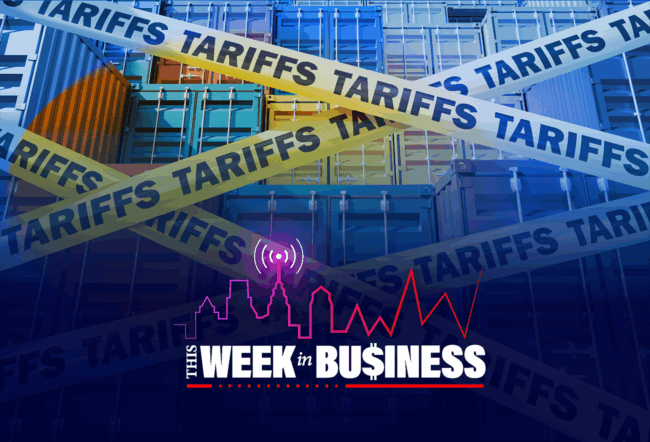The following article was written by Scott A. Snyder, a senior fellow at Wharton, adjunct professor at Penn Engineering, and chief digital officer at EVERSANA; and Mark Pecen, Wharton alumnus and senior technology executive at Approach Infinity, Inc.
Intellectual property (IP) has become the new battleground for waging global economic war. Consider the peak of patent filings from Japan in the 1980s and 1990s, and how Japan and China had taken control of much of the automotive, video, and camera markets globally, many of which were previously controlled by Europe and the United States. Today, AI is changing the landscape of IP and patents in two fundamental ways — the race to develop and protect intellectual property related to the latest AI innovations, as well as the use of AI in the process of mining and developing IP.
The recent explosion of global patent filings has caused many executives to reconsider their patent strategy and budget. Patents are used very differently by large multinational companies compared to small- and medium-sized firms. Both small and large firms use patents to protect their intellectual property, but their strategy must be consistent with the current stage of corporate maturity. A strategy that might be appropriate for a large auto manufacturer, for example, would typically not be anywhere near appropriate for a startup company or other small to medium enterprise. As companies grow and mature, patenting strategies tend to change over time as well, and it pays to re-examine a company’s patenting strategy periodically.
Four Strategic Ways to Protect Your Intellectual Property
1. For Large Multinational Companies, Consider Cross-licensing
For large multinational companies, patents are a currency used for trading intellectual property rights, and cross-licensing is a reasonable strategy. With generative AI, it is now much easier and faster to detect who may be infringing and with what technologies. If a large telecommunication equipment maker is found to infringe on certain patents held by another large manufacturer, the companies technically have the right to go to a patent court and attempt to obtain injunctive relief, preventing the infringing company from making and selling their products in certain jurisdictions. This approach is usually avoided because it may cause the parties to mount expensive legal counterattacks as well as some amount of reputational damage to both firms once the media becomes involved. In the case of public companies, negative media exposure can severely affect the stock prices, due to the uncertainty of the outcome of any pending litigation.
A more proactive solution might be for the two firms to sit down together and identify opportunities for cross-licensing. It may be that “Firm A” is infringing on 20 patents owned by “Firm B” but is later found that “Firm B” is also infringing on 25 other patents owned by “Firm A.” An agreement may then be drafted to allow both firms to use the identified patents, usually for a limited period (for example, three years). This allows both companies the opportunity to continue to operate their businesses without serious interruption, and the fact that the cross-license contract has an expiry date also means that the parties may return to the bargaining table at a future date if they both remain interested in the use of each other’s intellectual property.
“With generative AI, it is now much easier and faster to detect who may be infringing and with what technologies.”
2. Protect the Value of Small- and Medium-sized Companies
For small- and medium-sized companies, patents are a different kind of currency. Having appropriate patents can substantially raise the value of smaller firms by ensuring protection for the firm’s potential acquirer. If you’re a founder or senior executive at a small company or startup, you may want to construct a patent strategy to protect the (usually larger) acquirer. The presence, or absence of patent protection by small companies greatly affects the value of the firm. Diligence by large firms considering purchasing a smaller firm sometimes fails, or simply depresses the acquisition price if there are no, or too few, relevant patents protecting the product and its underlying technology.
Another aspect to consider is litigation. Multinationals can usually afford to litigate, and in some cases, can’t afford not to litigate. Small companies should almost never litigate, as they can easily run out of funding and/or be locked out of certain markets very quickly by the larger and better-funded opponent. Litigation is also a much more significant distraction for the smaller player where founders and executives play many more management roles and may interfere with acquisitions as well.
Generative AI has become an important tool in helping small businesses file patents; in particular, the ability to draft highly targeted claims based on the domain in which the firm operates, but also in anticipation of future opportunities not yet discovered by the mainstream business community. In addition, while today’s inventors have tremendous leverage using generative AI, it is important to keep in mind the latest regulations in the U.S., which basically state that all patent applications should protect the integrity of the information they contain, and that generative AI may be used as a tool to produce patent applications, but the resulting information must be reviewed to ensure factual accuracy. And for the potential acquirer of small and medium enterprises, generative AI can assist in identifying those SMEs whose patent portfolios are relevant (or not) to the firm.
The small- and medium-enterprise executive must also consider the lifetime cost of filing patents in various jurisdictions and all the associated costs of patent prosecution. A potentially hidden cost is the maintenance fees imposed by the various patent offices periodically that the owner of the patent must pay to keep the patent enforceable. These fees can become extremely costly as the portfolio of patent families grow. It is often the case that small company founders over-patent by filing in too many jurisdictions, thinking that future maintenance fees will become “someone else’s problem” once the company is acquired and failing to adequately budget for these fees.
3. Explore an Options-based Approach and Other Strategic Tools
There is no such thing as a global patent, but the World Intellectual Property Organization (WIPO) provides a formal global disclosure mechanism, search report, and the ability to file a utility patent in any of the 193 member states of the United Nations. The applicant has 30 months after filing to either promote the WIPO filing to a utility patent application in one or more countries or to abandon it. This long runway allows a WIPO filing to be used as a real option, like an inexpensive call option on an underlying stock.
A useful strategy used by some companies is to first file a WIPO filing, then roughly 24 months later before the WIPO filing goes to the national phase when the applicant must either file a utility filing or abandon it, the filing can be re-evaluated in terms of its relevance to the core business of the firm. If the filing is still relevant to their products on the market before the 30-month limit, the firm may choose to promote the filing to a utility patent application in the countries in which they do business.
The applicant may also elect to strategically abandon the filing if the invention is no longer relevant to the company’s products or services before the 30-month period ends. When an applicant abandons a patent filing, there are no more legal, filing, or prosecution fees to pay and the WIPO filing stays forever in the global patent database as prior art to deter anyone else from claiming to have created the invention.
“For small- and medium-sized companies, patents are a different kind of currency.”
The U.S. Patent and Trademark Office (USPTO) has historically granted patents that meet qualifications in about three to four years, but there now exists a USPTO fast-track application that can be applied for. A fast-track application costs slightly more than a conventional one, but the applicant is guaranteed to receive some indication of the patent office’s opinion within 12 months of filing. Knowing the opinion of the USPTO may reduce the uncertainty and potentially eliminate some of the expenses related to traditional simultaneous filings in many countries.
The U.S. provisional filing is another strategic tool. It’s not a patent, but a placeholder for the applicant’s priority date and creates a real option like the WIPO filing does. The applicant in the U.S. has 12 months to promote this provisional to a full utility patent application. U.S. provisionals are particularly useful when R&D organizations are working on standards, where certain inventions may become essential to these standards. For example, if a standards body adopts the applicant’s invention, the applicant may promote the provisional to a utility patent application, or otherwise abandon it if not. In both the WIPO and USPTO provisional cases, generative AI can offer an early warning of either new opportunities or indication of a crowded and potentially overly mature field with very little upside, and therefore provide an implicit recommendation to strategically abandon a filing.
4. Leverage Inventing Culture With Patent Mining
Patenting cultures in an organization must be grown over time. Protecting corporate IP protects the company’s revenue stream, corporate valuation, and other financial aspects that help protect employment, compensation, and bonuses. Inventors know that being named as an inventor on patents is traditionally regarded as a prestigious position within the technology community.
At many large firms, the company’s R&D leaders periodically hold “patent mining” sessions with researchers and engineers. Patent mining is a procedure that is frequently performed just before the release of a product, where senior technical people work with product development engineers to understand what novel elements may have been implemented in the new product. Generative AI now has the potential to dramatically accelerate this process by quickly identifying “white spaces” for new patents and even drafting the initial filings. These novel elements are identified and then considered for patenting before the product is launched.
Nevertheless, many engineers and researchers at small firms think that the extra work required to file patents is just not worth the effort. This is why some firms have made the effort to grow their inventing culture and to reward their inventors accordingly. Their employees know that the right patents are highly valued, and there is usually a significantly greater supply of patent disclosures to the patent committees than the budget will allow.
Because it is almost impossible to change a corporate culture once it has been established, small companies may consider ways to encourage and reward invention culture and the filing of quality patents where appropriate. The bonus structure for patent filing and issuance may be substantial at some firms. Smaller companies may not be immediately as generous as what a large multinational might offer, but the fact that innovation and patenting are being rewarded in some manner will reinforce the importance of an inventing culture as the company grows. Remember that the large multinational technology companies of today were once tiny startups that created a culture of innovation and excellence in all aspects of their value chains.



